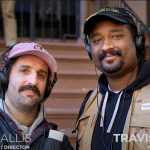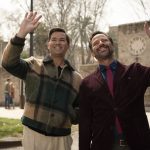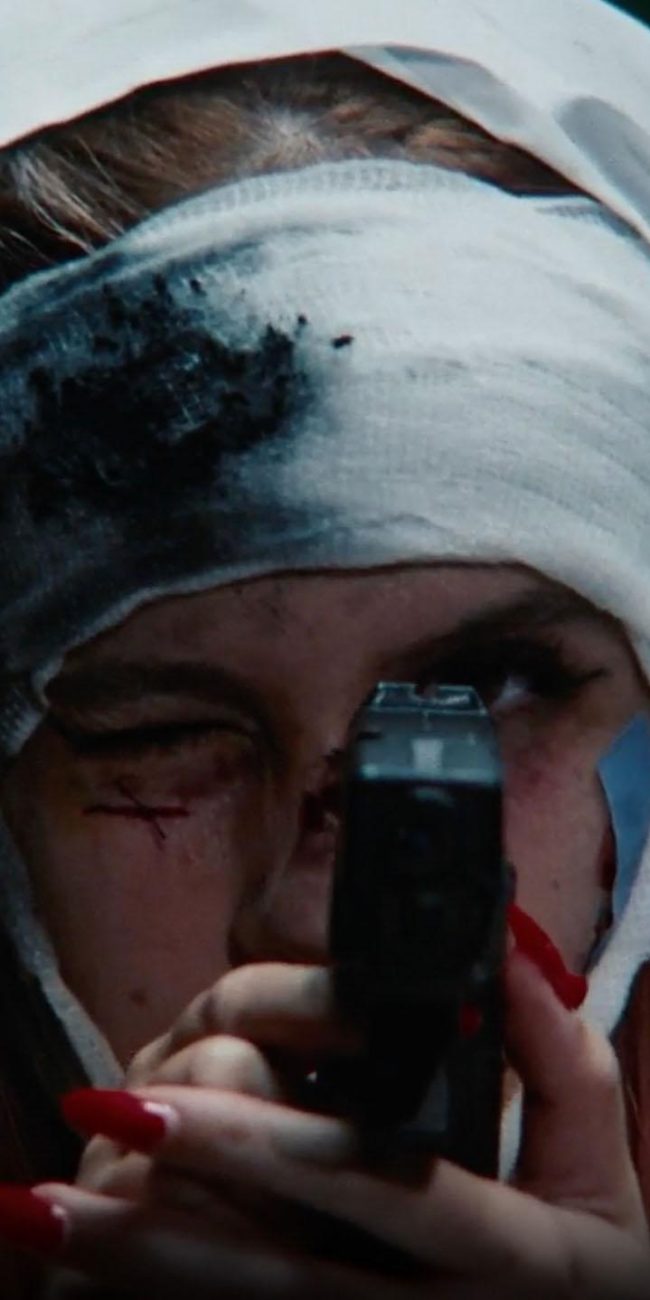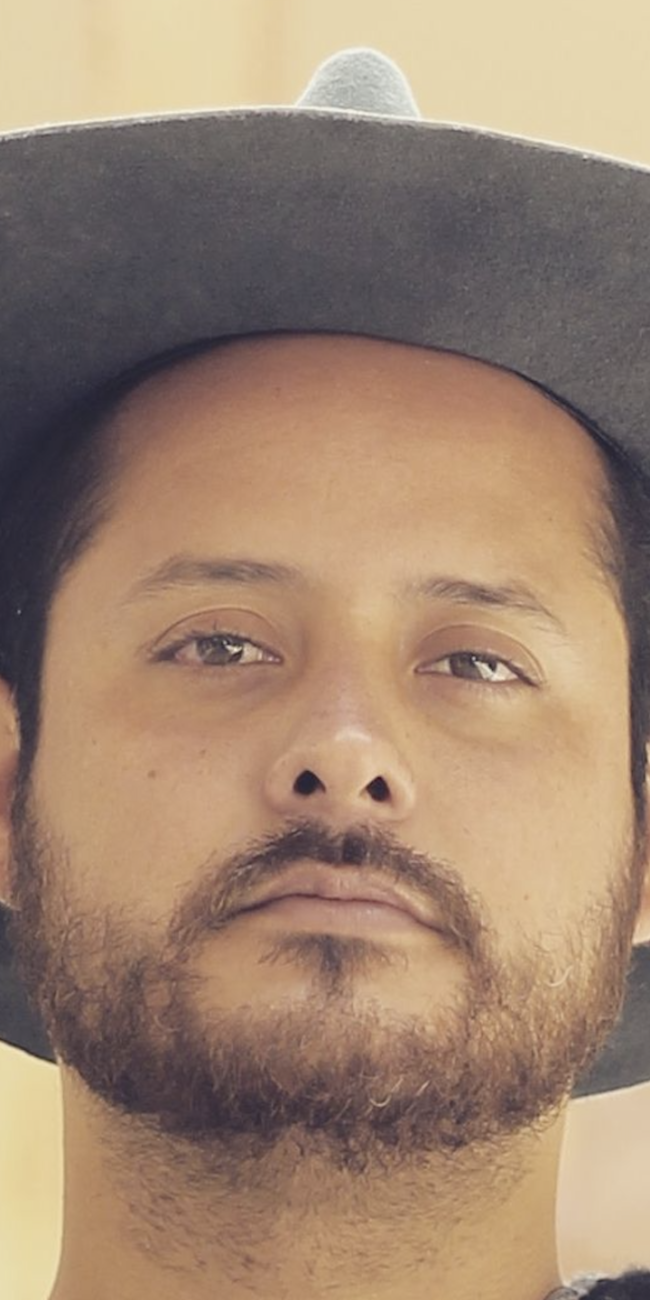A Conversation with Amalia Ulman (MAGIC FARM)
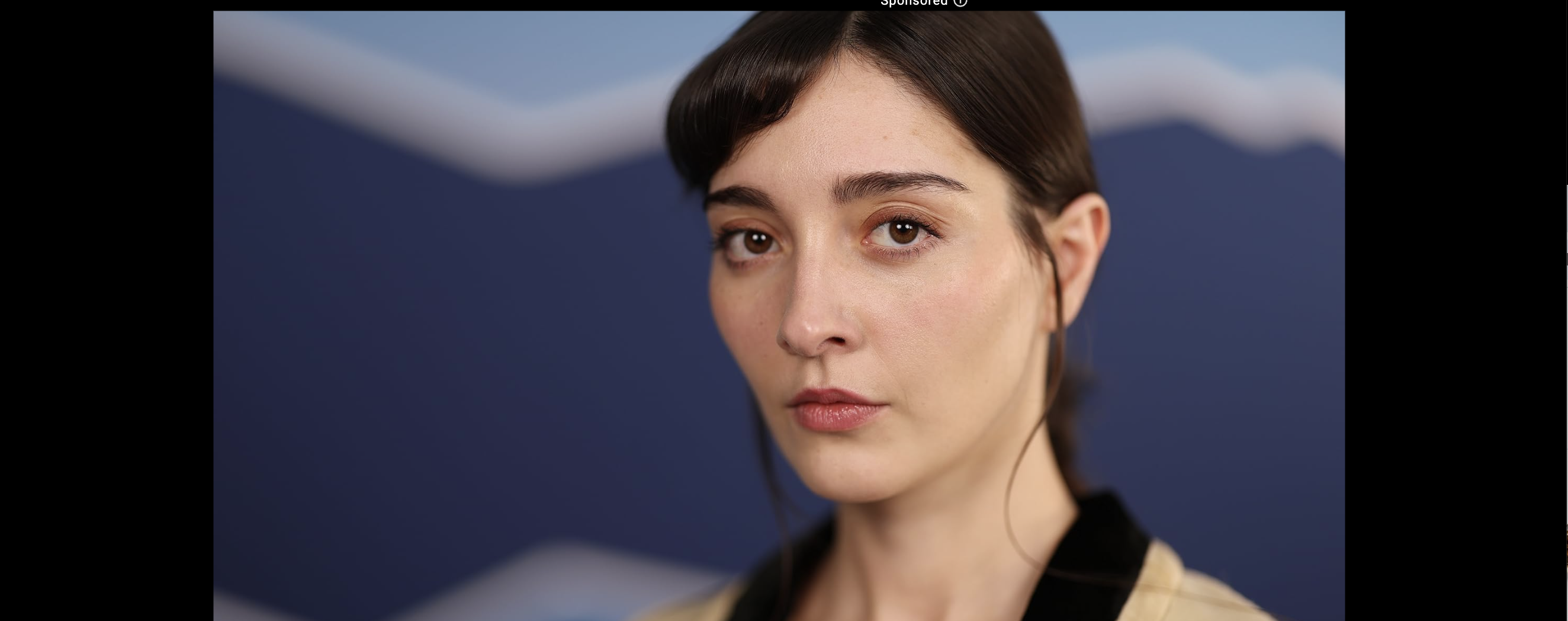
Filmmaker and visual artist Amalia Ulman brings her bold perspective to Magic Farm, a film that examines the fraught relationship between American media and Latin American subjects. Premiering at the 2025 Sundance Film Festival and later screening at Berlin, this 93-minute feature stars Chloë Sevigny, Simon Rex and Alex Wolff as members of an inept film crew who travel to Argentina to profile a local musician but end up in the wrong country. What begins as an attempt to fabricate a trend story evolves into something more profound as genuine connections form against a backdrop of unacknowledged environmental devastation.
Drawing from personal experience, Ulman crafts a narrative about cross-cultural communication where everyone is lying to each other. The film’s genesis stems from learning about her grandmother’s sister going blind from glyphosate exposure near Monsanto plantations in rural Argentina. Ulman, who previously garnered acclaim for her debut feature El Planeta and her groundbreaking social media performance art, finds in cinema the freedom to explore fiction that was often misunderstood in the fine art world. With Magic Farm, she continues her artistic exploration of finding beauty and human connection amid challenging circumstances.
Hammer To Nail: The film addresses environmental issues and health crises caused by agrochemicals in rural Argentina. What research process did you undertake to accurately portray this?
Amalia Ulman: It’s not that hard to find a field in Argentina that is not covered in them. One of my Grandma’s sisters is still living in the north. She is indigenous and is from the rural areas in the north. A lot of them ended up in Buenos Aires because there was a massive exodus in the 60s and a lot of people moved to the city. Recently my mom found out that this aunt of hers was going blind because of these chemicals. I did a lot of research on this when I was still working on El Planeta. I knew I wanted to do something with it.
I have always been very interested in the indigenous communities of Argentina. This destruction of the ecosystem is the end result of the mass killings of indigenous people in Argentina. For a while I had no idea how I could make a film about it. I don’t work unintentionally but I am not usually so aware of my processes. In 2020 I finally saw the first scene of the film. That is more how I work. I usually visually see the first scene in the film. It slowly took the shape of these documentarians visiting Argentina. I found it was a good vehicle for me to tell the story. I did not feel comfortable narrating the story myself as an Argentinian because I have never lived there. Coming in as a foreigner was a perspective I felt more comfortable with.
HTN: The film satirizes “hipster journalism” and media exploitation of the Global South. What specific experiences or observations inspired this critique?
AU: It has always been a part of my life. Both my parents were hipsters. I went to art school and was surrounded by a lot of this. Being Latin American myself I have always had to navigate both worlds. In many cases I have concealed the fact that I am Latin American myself. The code switching between the two has always been a big part of my life so that made me attracted to doing it in this film.
HTN: What was your collaboration process like with Chloë Sevigny, Simon Rex, Alex Wolff and the rest of your international cast? How did you build the chemistry between characters from such different backgrounds? Could you discuss that casting process?
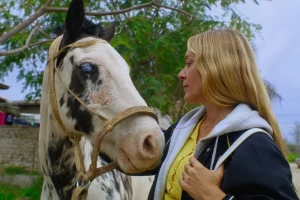
Chloë Sevigny in MAGIC FARM
AU: Chloë’s role was written for her. It was really important for her to be in the film. Without her it would not be the same. That meta element was needed. She has that cool factor, is friends with a lot of people who work for Vice and comes from a skateboarding culture. My father is a skateboarder and had a skateboarding brand in Argentina in the 80s. It is something I am really familiar with and I wanted to depict it as accurately as possible. I did not just want actors mocking it. I wanted people who embodied it. Simon Rex was the perfect person to take on that role because I very specifically wanted that guy to be a Dov Charney type of character. He was the only actor who could bring that to life in the way I wanted to. Most other actors I had spoken to had a much darker take on it. I needed someone to express that superiority of evil. Someone who is so obnoxious they don’t even realize it. It was really important to get this cast together. Directing starts with casting and being able to trust your actors is the best thing.
HTN: You’re both the writer-director and play a character named Elena in the film. What creative advantages or challenges did this dual role present?
AU: I was just exhausted and I will never do it again. The reason I was able to do it on El Planeta was that it was a much smaller production. It was only a crew of 5 people. I have some disabilities so we arranged the schedule in a way that would work for me. But on a bigger production like this one, I am dealing with so many more people that my issues get relegated to the bottom haha. Another thing that I realized is I love my role as a producer and director more than acting. I don’t really like acting per se. I do it as a means to an end. I act from the perspective of a director. I know what I need and I do that. I don’t know if I could act for another director. When you are dealing with a larger cast, actors need their director. Sometimes I was very sad to not be able to give them my 100% because I am in the scene with them. At the end of the day, I am only one person. When I have all these other things to do, obviously it is difficult to focus on everything as well as possible.
HTN: I love this introduction with the motorcycle so much. It beautifully situates the audience and is an amazing intro to this character & location. What was your thinking?
AU: Well that is my actual Grandma haha. That was the first scene I had in mind for the film. When I first thought about the film it was always my Grandma on her motorcycle, going through the fields, on her way to church. My Grandma’s favorite thing ever was riding her motorcycle to church. I am originally from an area that does not have the plantations but the location of the film is very similar. I thought it was very funny the idea of “what would happen if Vice contacted my Grandma?” Another thing I wanted to reflect was the politeness of the working class people. Sometimes that politeness can create a lot of problems. If they are not in a position to say yes they still do. This would happen between my Grandma and I. I would ask for something ridiculous growing up and she could never say no. The contrast of someone who is so obnoxious communicating with someone who is debilitatingly polite was interesting to me.
HTN: You’ve mentioned that in Latin America, discussing corruption or tragedy is often considered “impolite.” How does your film use humor and human connection to create space for these difficult conversations?
AU: There is a very different understanding of life between Americans, or even Europeans, in relation to Latin America and many other countries. Being able to complain is a privilege. Being able to fight back against evil corporations is a privilege. In a lot of places you would be killed. In a lot of places there is really not much you can do. Most people would rather try to stay out of it and keep their peace. They try to have the best life possible within this corruption.
HTN: The production design and cinematography situates the viewer immediately into this world. Talk about your collaborations to achieve this distinctive visual style.
AU: I was the production designer, however, there were definitely people that helped me. That is one of the parts of the film I am most deeply involved in. The costume design, the location scouting and the art direction are all part of the photography which I care so much about. One of my favorite parts is location scouting. We were lucky to come with the help of a very good location scouting person in Argentina. I had a very clear idea of the spaces I wanted. A lot of the places I found in person. I hate using sets and faking stuff. I love when a place does not need much touch ups and many of our locations did not! One of my favorites is the scene where they are playing the music in that house and the receptionist and Joe have that moment. We found that by accident because that place is next to a small radio station we were considering using for the film. Randomly I entered this house. I saw these colors, the layers and layers of paint peeled on top of eachother It was so amazing. I asked “Can we actually shoot here instead?” There were a lot of situations like that where I just walked around during my time off and found the places.
HTN: You’ve worked across different artistic mediums. What unique storytelling possibilities does cinema offer that your work in fine arts or performance doesn’t?
AU: I learned the hard way that fiction is not really welcomed in fine arts. When I used fiction it created all these misunderstandings. I was accused of being a hoaxer. There were a lot of issues when I was just doing fiction in a very classical way. I was telling stories with a beginning and an end. Cinema gives me the structure of what I wanted to do with fine arts while being understood and respected for it. I think a lot of the things that are part of my craft are understood in cinema terms way more than in the world of fine arts. It gives me more permission to dive more into what I was doing before. It’s a given in cinema that your stories should have a beginning and an end. Each project should also have a specific defining aesthetic. In fine arts that was not obvious and I struggled to be understood.
– Jack Schenker (@YUNGOCUPOTIS)

